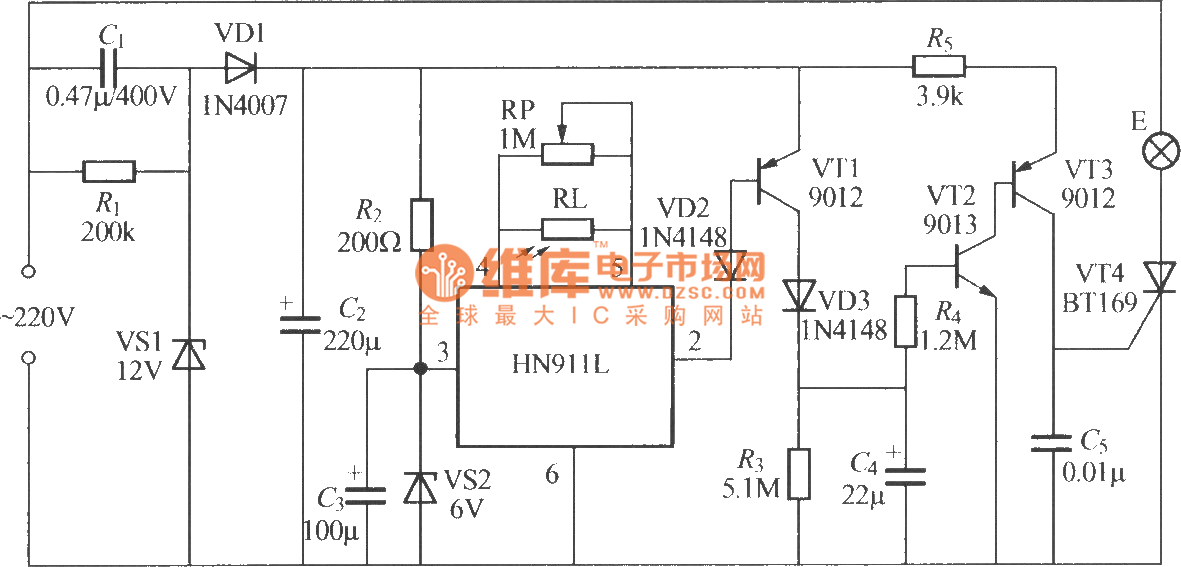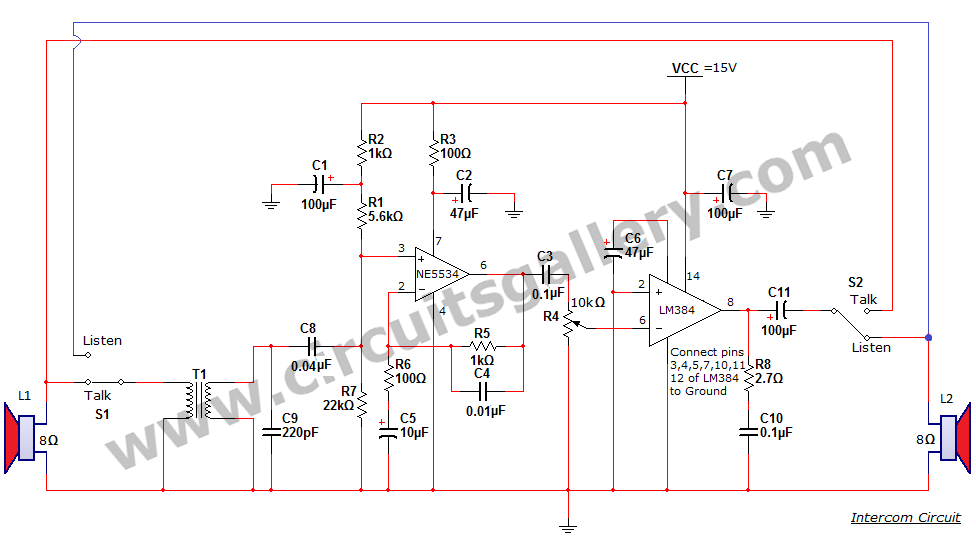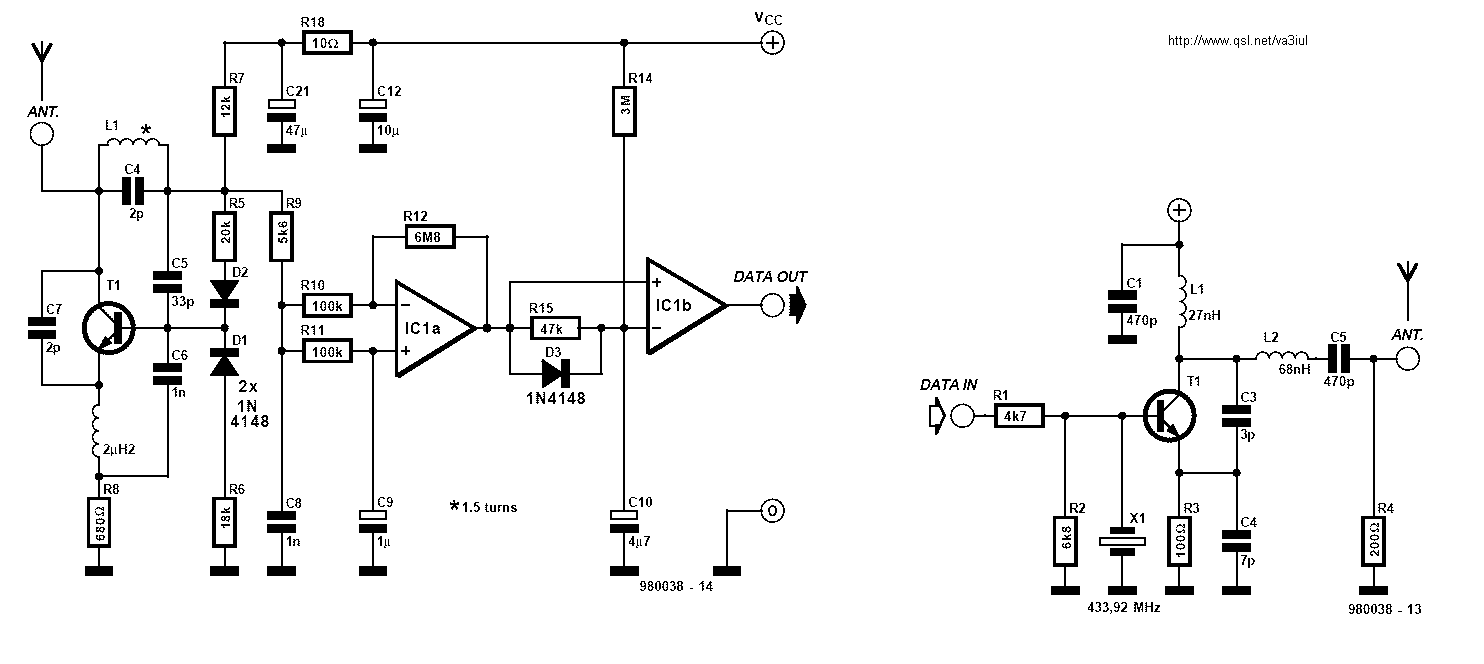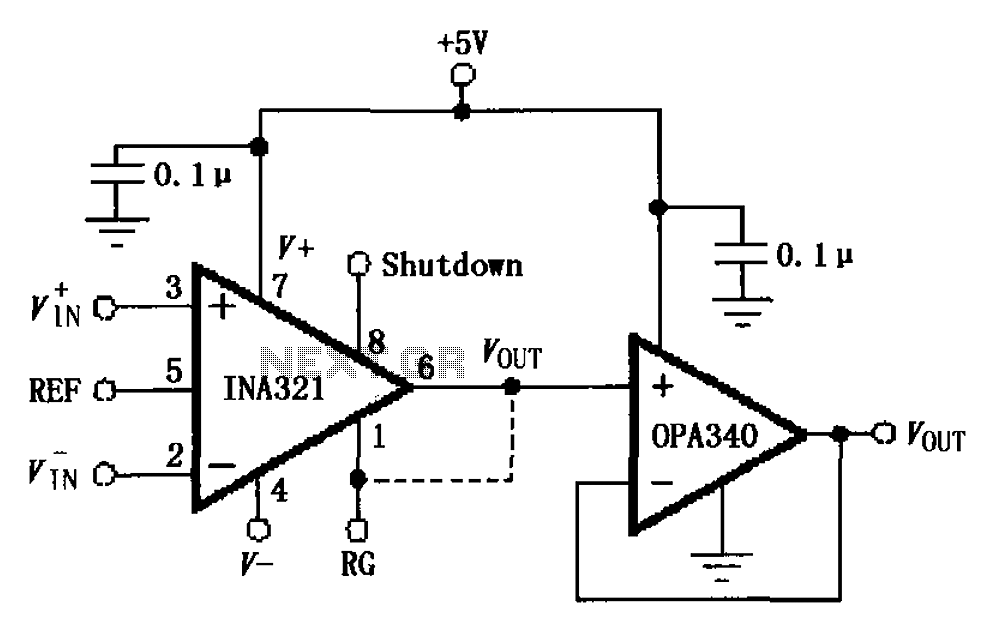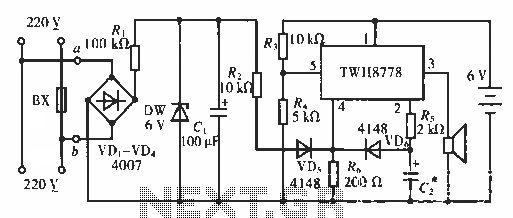
Simple Fm Transmitter Circuit

This transmitter operates on a 9-V battery and can function as a wireless microphone compatible with standard 88- to 108-MHz FM broadcast receivers. To adhere to FCC regulations, the antenna length should not exceed 12 inches. The inductor L1 consists of 6 turns of #24 wire, which is wound around a pencil or a 14 mm form, with the turns spaced by one wire diameter. Additionally, C6 is a gimmick capacitor with a value of approximately 1 pF.
The transmitter circuit is designed to convert audio signals into radio frequency signals that can be transmitted wirelessly. The core components include the inductor L1, which plays a crucial role in determining the operating frequency of the transmitter. The 6 turns of #24 wire wound around a pencil or a 14 mm form create an inductance suitable for the desired frequency range. The spacing of the turns by one wire diameter is essential to minimize the coupling between the turns, which can affect the inductance value and, consequently, the performance of the transmitter.
The use of a 9-V battery provides a stable power source, ensuring consistent operation of the circuit. The transmitter circuit typically includes a microphone input stage that captures audio signals, amplifying them before modulation. The modulation process involves mixing the audio signal with a carrier frequency generated by the oscillator circuit, which is tuned to the desired FM band between 88 and 108 MHz.
The gimmick capacitor C6, valued at approximately 1 pF, is used to fine-tune the circuit's frequency response. This small capacitance can help stabilize the oscillation frequency and improve the overall performance of the transmitter. The design must also account for the antenna, which should be kept under 12 inches to comply with FCC regulations regarding unlicensed transmission equipment. Proper selection and installation of the antenna are critical for achieving optimal transmission range and signal clarity.
Overall, this transmitter design offers a compact and efficient solution for wireless audio transmission, suitable for various applications where mobility and ease of use are paramount. Running from a 9-V battery, this transmitter can be used as a wireless microphone with an ordinary 88- to 108-MHz FM broadcast receiver. Keep the antenna length under 12 inches to comply with FCC limits. LI is 6 turns of #24 wire wound around a pencil or a 14 form, with turns spaced 1 wire diameter. C6 is a gimmick capacitor of about 1 pF.
The transmitter circuit is designed to convert audio signals into radio frequency signals that can be transmitted wirelessly. The core components include the inductor L1, which plays a crucial role in determining the operating frequency of the transmitter. The 6 turns of #24 wire wound around a pencil or a 14 mm form create an inductance suitable for the desired frequency range. The spacing of the turns by one wire diameter is essential to minimize the coupling between the turns, which can affect the inductance value and, consequently, the performance of the transmitter.
The use of a 9-V battery provides a stable power source, ensuring consistent operation of the circuit. The transmitter circuit typically includes a microphone input stage that captures audio signals, amplifying them before modulation. The modulation process involves mixing the audio signal with a carrier frequency generated by the oscillator circuit, which is tuned to the desired FM band between 88 and 108 MHz.
The gimmick capacitor C6, valued at approximately 1 pF, is used to fine-tune the circuit's frequency response. This small capacitance can help stabilize the oscillation frequency and improve the overall performance of the transmitter. The design must also account for the antenna, which should be kept under 12 inches to comply with FCC regulations regarding unlicensed transmission equipment. Proper selection and installation of the antenna are critical for achieving optimal transmission range and signal clarity.
Overall, this transmitter design offers a compact and efficient solution for wireless audio transmission, suitable for various applications where mobility and ease of use are paramount. Running from a 9-V battery, this transmitter can be used as a wireless microphone with an ordinary 88- to 108-MHz FM broadcast receiver. Keep the antenna length under 12 inches to comply with FCC limits. LI is 6 turns of #24 wire wound around a pencil or a 14 form, with turns spaced 1 wire diameter. C6 is a gimmick capacitor of about 1 pF.
